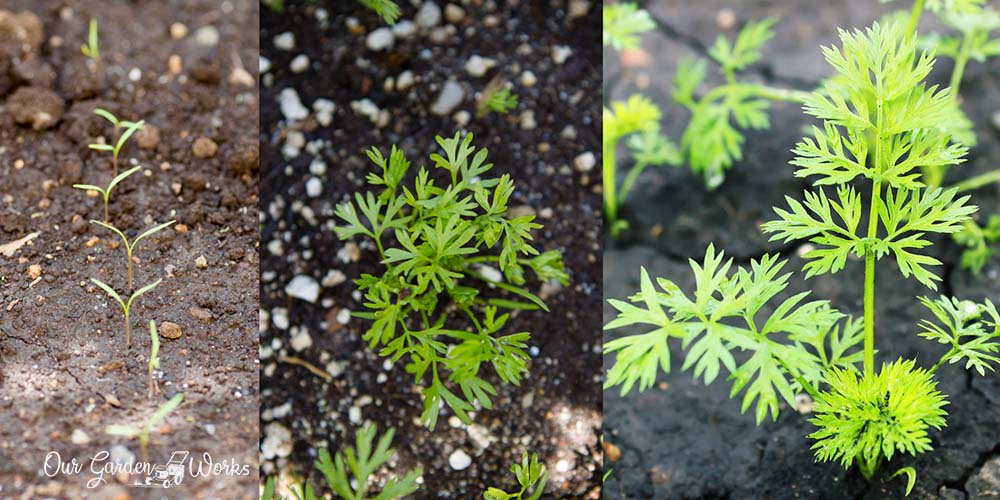Sprouts of fruits and vegetables are hard to identify once they are on the ground. Once weeds are around, you can mistakenly pull the sprouts, especially if they look like grass.
In this post, learn what do carrot sprouts look like to prevent the grave mistake of pulling out the plants you’ve been waiting to grow.
Carrot Seed Leaves and True Leaves
The tricky part about carrot sprouts is the shape of their cotyledon or seed leaves. A cotyledon is the first set of leaves from the seed that will supply nutrients from the sun. As the carrot plant develops, its true leaves will grow, and the cotyledon will die.
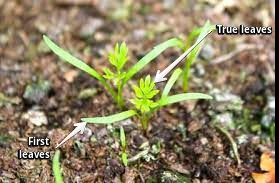
The true leaves have the shape of the actual plant. The cotyledon of carrots does not have the usual shape of the first leaves of other plants, which are round and small. The first leaves have tiny stems and long leaves that resemble the leaves of grass and weeds.
To further understand what carrot sprouts look like, check out its growth stages below.
Carrot Seedling Growth Stages: What Do Carrot Sprouts Look Like?
Carrots are a cool-loving crop that takes about three months to grow. The seeds are very tiny, and it is amazing to see them grow from a tiny seed into a delicious root crop.
Here’s how carrots grow from seed to sprouting stage:
Germination Stage
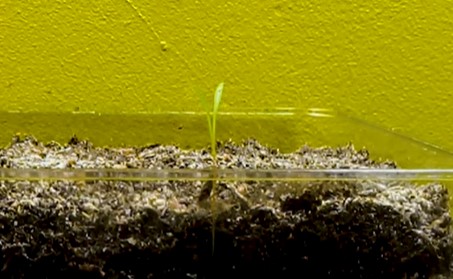
The germination time of carrots is around 2 to 3 weeks which is slower than other crops. The first leaves will emerge like a grass seedling with long blades and short stems that are almost not visible above the soil.
The germination stage of carrots is the trickiest part of their development because of the deceiving look of the cotyledons. If you’re not careful, you’ll probably pull it off the ground without knowing it’s the plant you are caring for.
First True Leaves
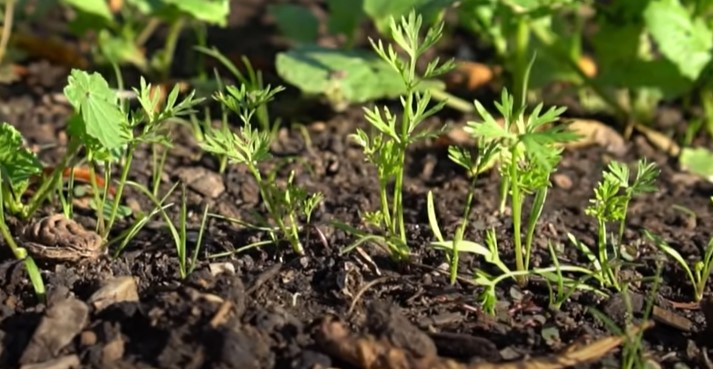
After a few days or a week, the true leaves will emerge between the cotyledons. The true leaves have long stems and possess the shape and curly edges of the carrot leaves.
The second batch of leaves has almost the same look as cilantro or small fern. They also grow a few inches taller than the first ones.
Second Batch of True Leaves
In the second month, the carrot plant is getting a lot of nutrients through the first true leaves. It gains the momentum to grow another stem higher than the first leaves. The new set of true leaves will be about 16 to 18 inches tall.
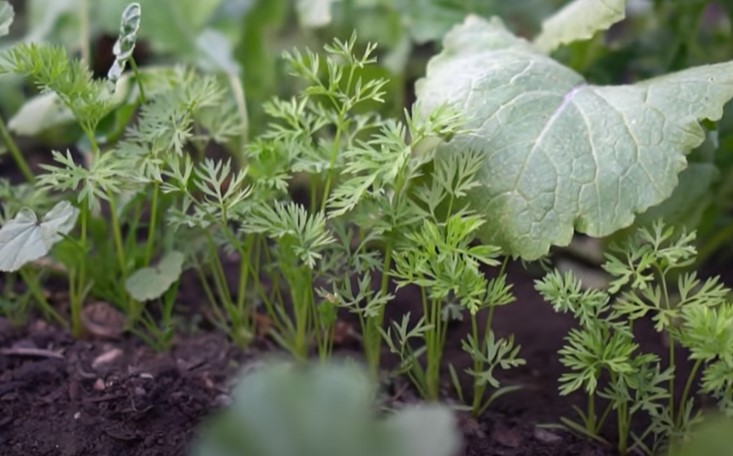
New leaves will continue to emerge from the center of the carrot plant until maturity. Consequently, the old leaves die naturally.
To keep the plant tidy and safe from disease, it’s a good practice to remove the dry leaves. It’s more like deadheading your flowers like roses but in the form of leaves for carrots to help preserve the energy of the plant.
Maturity and Harvest
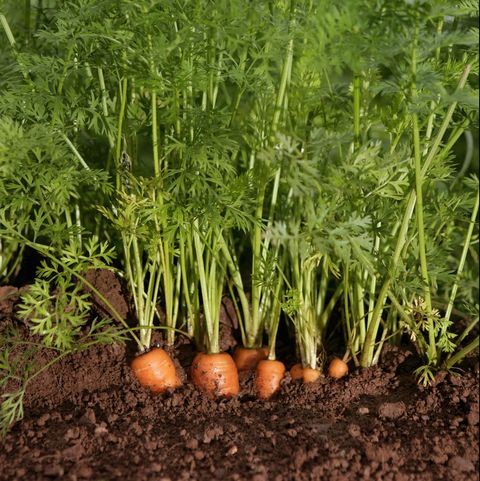
After three months of waiting, your carrot plants are now ready for harvest. Unlike turnips and radish, carrots are not peeking above the soil. You may need to dig a little to see the top of the orange carrot crops.
You can start pulling them from the ground when they’re already at the right size. It’s fascinating to see carrots grow from a tiny seed into a long orange crop.
The harvesting part is probably the most fulfilling part in growing carrots since you’ll never see the fruits of your labor until you pull them out.
How To Identify Carrot Sprouts vs. Grass and Weeds?
Since the looks of the first leaves are deceiving, you’re probably looking for some other way to distinguish carrot sprouts.
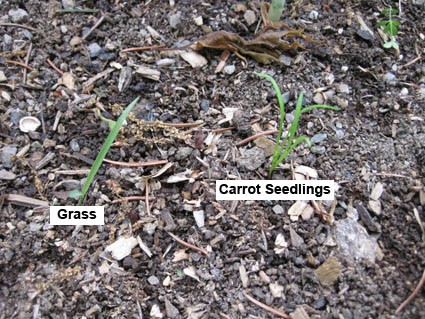
Source: Hudson Valley Backyard Farm
Here are some features that can tell you the difference between carrot sprouts from weeds and grass:
First Leaves
The first leaves of carrots are long, thin, and usually grow in numbers. Grass, on the other hand, may look the same but often have one leaf.
The cotyledon or first leaves of carrots also emerge in the middle of the existing leaves. Weeds have round-shaped first leaves which are different from carrot sprouts.
Smell
Carrot leaves don’t have the same aroma as basil, but you’ll need to pinch it a bit to smell the usual scent of carrots.
Grass doesn’t have the distinct smell of carrots but smells like the usual weed or grass. You have to ensure that you are not pinching the sprouts way too much, or they’ll die.
Leaf Growth
If it’s hard to tell if the sprouts you have are carrots or grass, let them sit in your garden for a couple of weeks.
Allow the true leaves to emerge to know which sprout is due for removal. True leaves of carrots grow between the first leaves and have a fern-like shape.
Creative Plant Markers and Tags For Carrot Sprouts
The confusion between carrots and other plants or weeds in your garden stems from boundary issues. Though weeds can pop up anytime, having a designated location for the carrots will lessen the chance of pulling them like a weed.
Carrots take a while to grow, and in a few months, you’ll probably forget where you planted the tiny seeds.
Here are some creative and aesthetic plant markers and tags that can make it easier for you to distinguish carrot sprouts:
Plant Tags
Plant tags are probably the most aesthetic way to identify your carrot patch. There are several designs that you can choose depending on your preference. Plant tags in the garden are a helpful tool for forgetful gardeners.
Here are some plant tag options that you can choose from:
Mziart 120Pcs 4 Inches Plastic Plant Tags
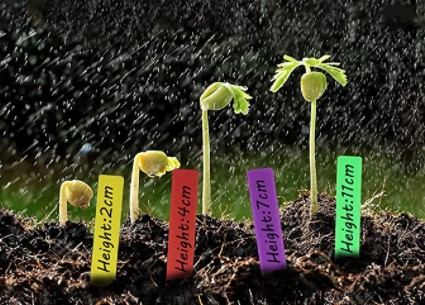
Mziart plastic tags are ideal for gardeners who want to know what do carrots sprouts look like with a reusable set of plant markers. The plastic plant tags are durable and UV resistant.
There are 20 pieces of plant tags for each color, which include:
- Red
- Purple
- Green
- Blue
- Yellow
- White
The size of the plant marker is 4 x 0.7 inches (100 x 18 mm) which is an ideal height for sprouts and baby plants. If you love to add some pop of colors around your plant bed or garden, this option won’t disappoint. Plus, it’s also affordable.
HOMENOTE 60pcs Bamboo Plant Labels
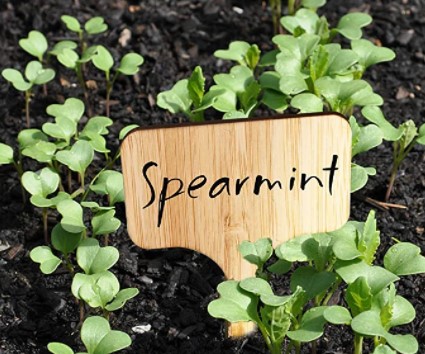
Sometimes, your style applies to the look of the garden tools you own. If you’re looking for something artsy with a touch of earthy vibe, bamboo plant labels might suit your taste. HOMENOTE Bamboo Plant Labels are made of flat bamboo pieces with a lot of space to write on.
The label size is 4 x 2.75 inches with a 1.26-inch writing space where you can even draw anything.
The pointed tip of the label helps with the easy application on the ground. HOMENOTE bamboo labels are a good option if you want something visible from afar.
Whaline 50Pcs Wooden Plant Labels with A Marker Pen
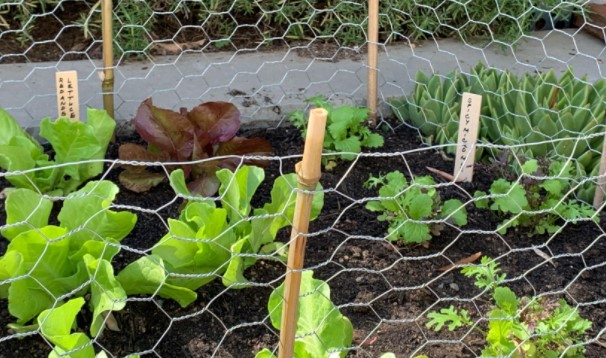
Some gardeners want something earth-friendly and bigger tags for their plants. Whaline Wooden Plant Labels are made of bamboo with a size of 5.3 cm / 6″ in length, 2 cm / 0.8″ in width. Each pack also contains 50 labels that can last for several growing seasons.
Due to its bigger size, you can write the plant labels in large letters for easy visibility. It also sticks out easily in in-ground gardens, unlike the small labels.
If you’re growing several rows of vegetables next to each other, this might be a good option. So, no matter how bushy the plants can get, the labels are still easy to find.
Plus, it comes with a marker! Who doesn’t love free stuff!?
Whaline White Plant Labels with Garden Marker Pen
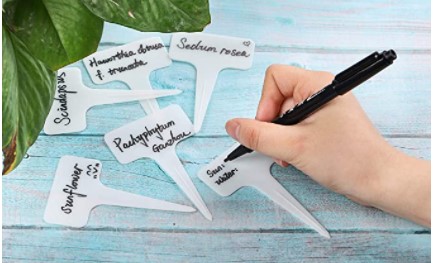
Some locations have high humidity that causes bamboo labels to become moldy. Whaline White Plastic Plant Labels are made of reusable plastic which doesn’t absorb water and poses a mold risk for your plants. They are easy to use, and the label area has a bigger space to write on.
A pack contains 100 pieces of fables with a dimension of 2.36 x 3.94 inches. Each label has a pointed tip for easy application on gardens. It is also uniformly white and suits gardeners who love minimalist style. It comes with a marker so you can use it right away.
Pebbles
Pebbles are easy to place around the exact spot where you planted your carrot seeds. They can provide contrast to the surrounding soil, so you’ll no longer wonder what do carrot sprouts look like.
Here are some of the creative ways you can use pebbles to organize and locate your carrot sprouts at a glance:
TOYPOPOR Mix Horticultural Lava Rock Pebbles
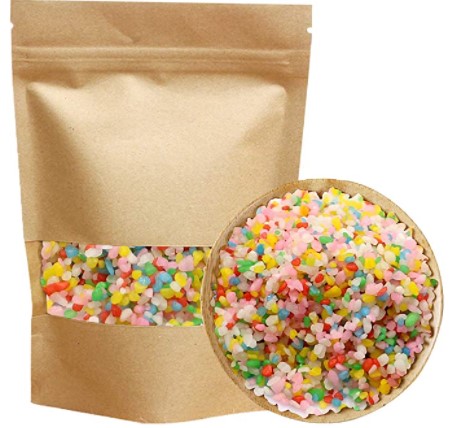
Add some pop of color around your carrot seeds to know where exactly you planted them. The horticultural lava rocks allow you to select different colors that suit your taste.
They are tiny and don’t deprive your seedlings of oxygen. Surely, your grandkids will love to plant with you using these colorful pebbles.
Voulosimi 12 Pounds River Rock Stones
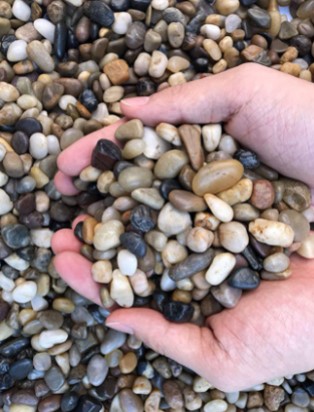
If you’re a fan of polished rocks, you may also try these soft-rounded river rocks from Vuolosimi. They are a mix of different colors of rocks that gives your garden a forest vibe.
A bag of these rocks is around 12 pounds. You can use the other stones in decorating your garden or walkways.
Midwest Hearth Natural Decorative Jade Bean Pebbles
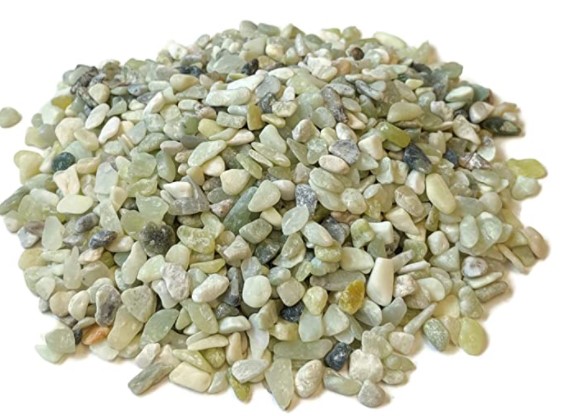
Midwest jade bean pebbles provide a different touch to plant containers and gardens due to their subtle pastel colors. They are a bit paler than other pebbles which give planters a unique subtle chic look.
If you’re up for something new and a new set of colors, try these aesthetic jade pebbles.
Outy Crushed Natural White Stone Pebbles
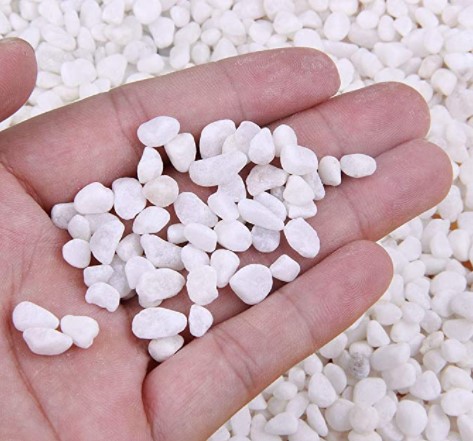
For visibility, nothing compares with the effect of white pebbles. If you only aim to make your carrot sprouts visible at a glance, white stones are the most practical approach. They create a perfect contrast to the dark color of the soil. Plus, they make your garden look neat and fresh.
NAMTSO Glow Rocks
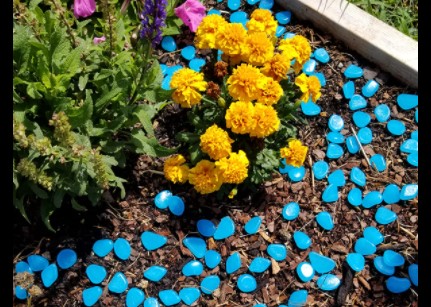
Glowing rocks in your garden is a total game-changer to your garden decoration. They absorb light during the day and glow for three hours in the dark.
Placing glowing rocks is a fun way to mark your carrot sprouts and a fun activity to do with your kids or grandkids.
Broken Terracotta Pots
Broken pots may look useless, but they can still be functional for different purposes like labels. Don’t throw our broken pots and use them as a plant label for your carrot sprouts. They look good in the garden with the correct placement. Plus, you can save on spending on gardening tools too.
Final Thoughts
We hope that this post helped you learn what do carrot sprouts look like and the strategies to mark them in your garden.
Once the true leaves start to emerge it will be easier to see the difference between grass and weeds. When you’re in doubt, don’t pull anything yet and let time tell which are the true carrot sprouts.
Did you use any planter label or have some horrible experience in pulling carrot sprouts?
Let us know your experience in the comments so we can learn from each other’s mistakes.
Also, don’t forget to share this post with your friends. Who knows they’re probably struggling to find their carrot sprouts too.
